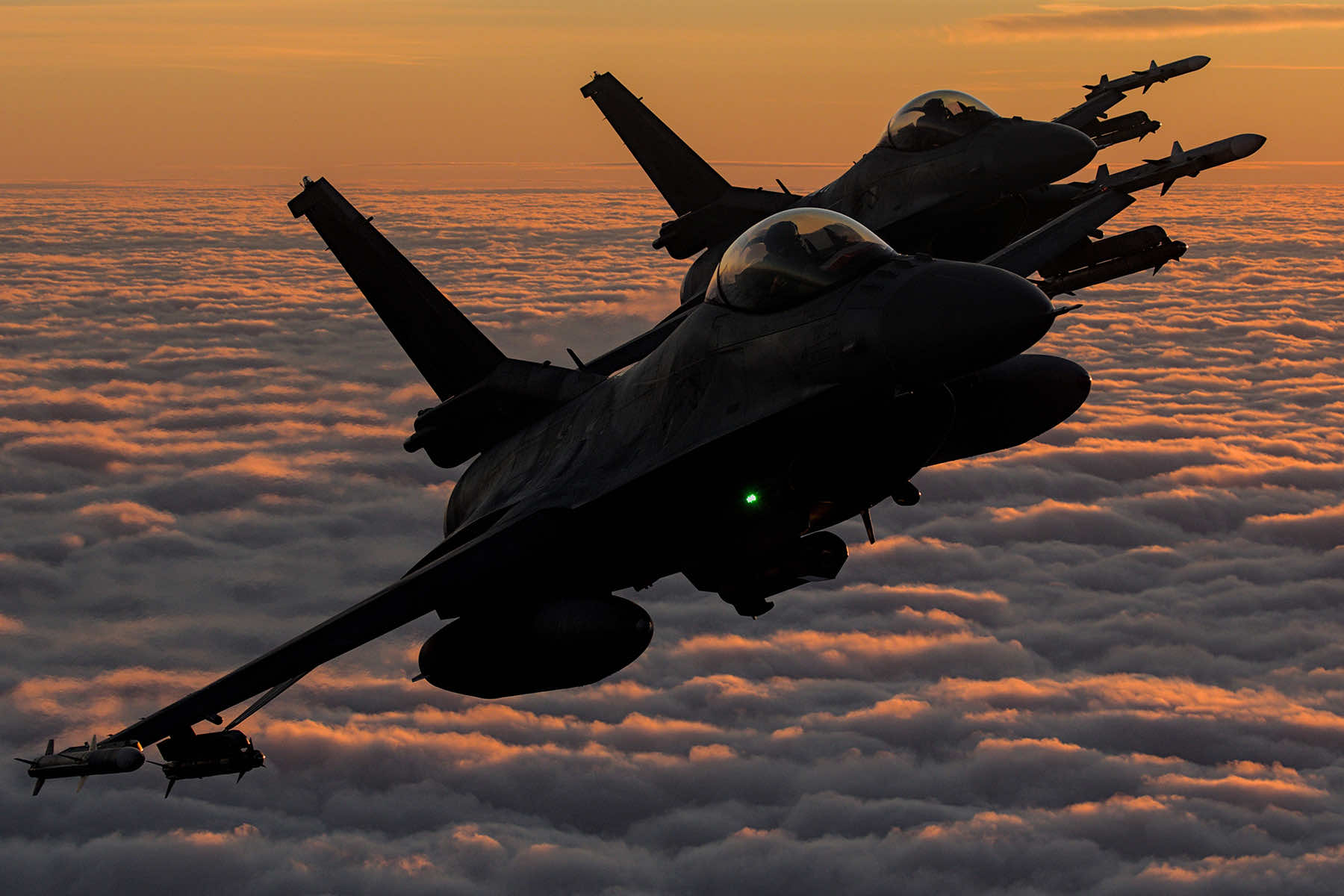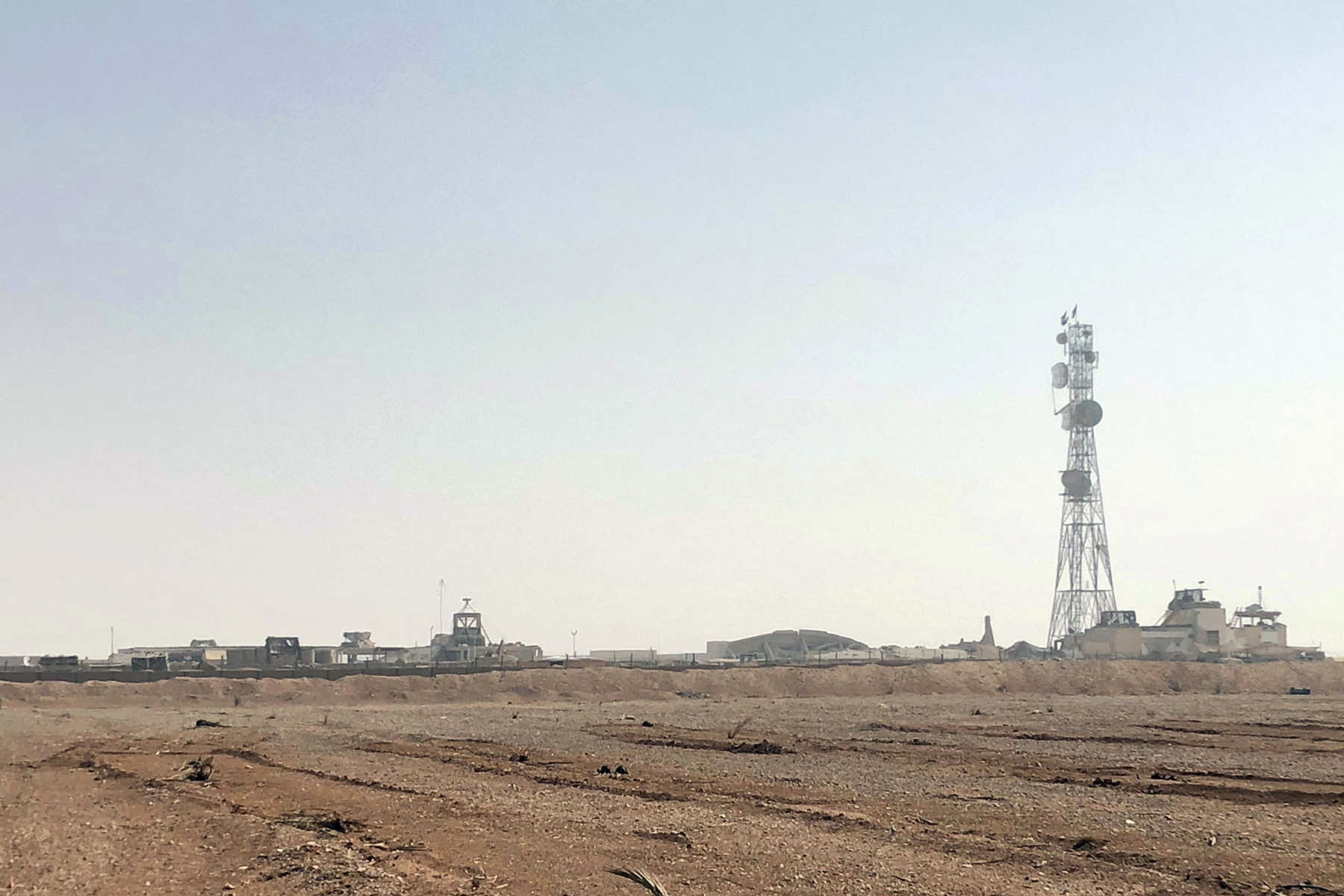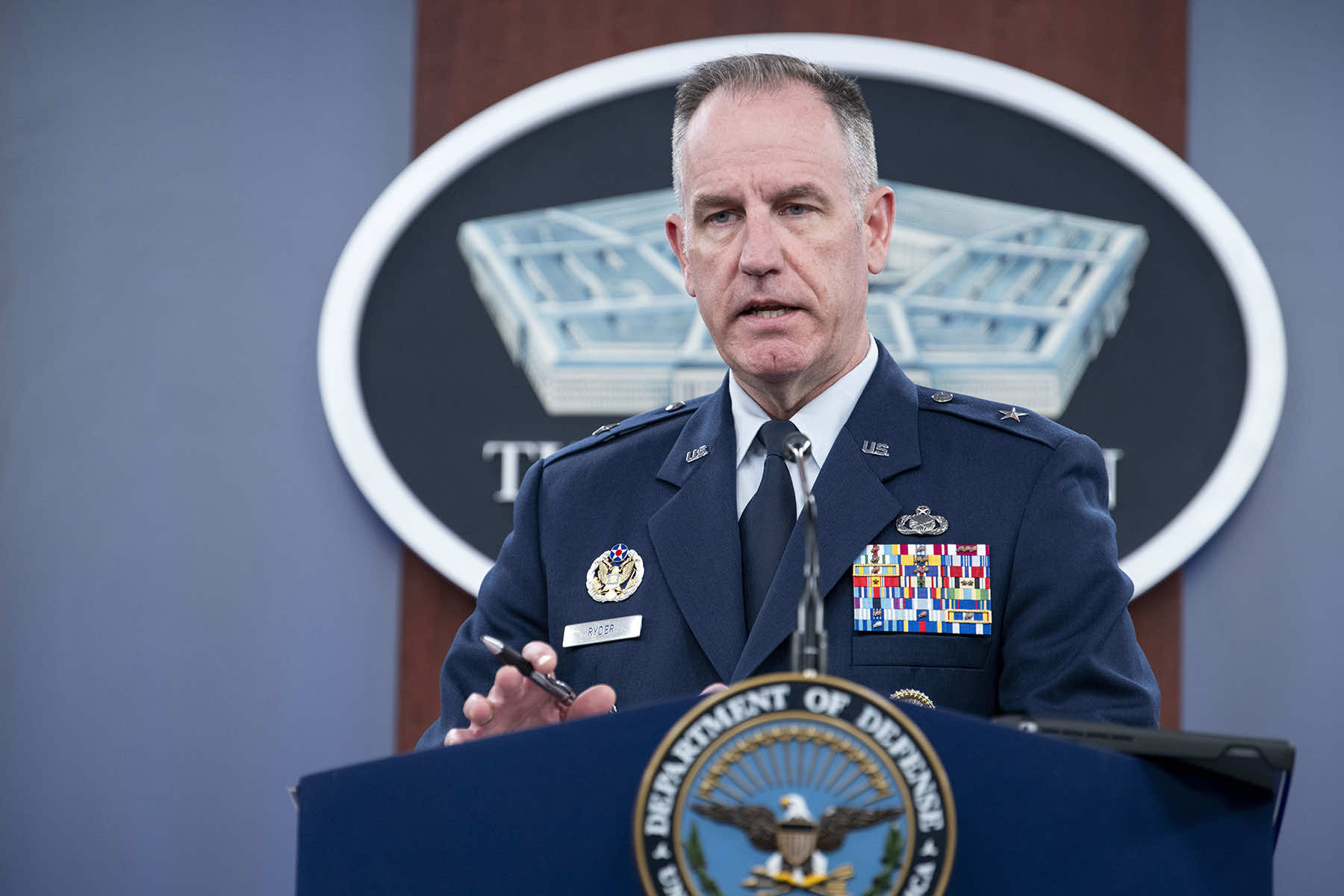
U.S. fighter jets launched airstrikes on October 27 on two locations in eastern Syria linked to Iran’s Revolutionary Guard Corps, the Pentagon said, in retaliation for a slew of drone and missile attacks against U.S. bases and personnel in the region that began in mid-October.
The strikes reflect the Biden administration’s determination to maintain a delicate balance. The U.S. wants to hit Iranian-backed groups suspected of targeting the U.S. as strongly as possible to deter future aggression, possibly fueled by Israel’s war against Hamas, while also working to avoid inflaming the region and provoking a wider conflict.
Air Force Brigadier General Pat Ryder said that the strikes near Boukamal by F-16 and F-15 fighter aircraft targeted a weapons storage facility and ammunition storage facility used by the IRGC and affiliated groups. “Both facilities were destroyed,” he said. “We currently assess there were no casualties in the strikes.”
A senior U.S. military official said there had been Iranian-aligned militia and IRGC personnel on the base and no civilians. The official would not say how many munitions were launched by the jets.
A senior defense official said the sites were chosen because the IRGC stores the types of munitions there that were used in the strikes against U.S. bases and troops. The two officials briefed reporters after the strikes on condition of anonymity to provide details on the mission that had not yet been made public.
Syrian opposition activists confirmed the U.S. strikes in Syria’s eastern province of Deir el-Zour. Omar Abu Layla, a Europe-based activist who heads the Deir Ezzor 24 media outlet, said the main target was an area known as “the farms” outside the town of Mayadeen. He said it is an important transit site where weapons from Iran are stored before being shipped to Lebanon.
He said the second strike hit an area known as the “green belt” in the Boukamal area that borders Iraq. According to Abu Layla, some people were evacuated before the strikes because the retaliation was expected. The Britain-based Syrian Observatory for Human Rights, an opposition war monitor, said ambulances were seen rushing to the area but it wasn’t clear if there were casualties.
Meanwhile on October 27, an Iranian semiofficial news agency, Tasnim, said gunmen in east Syria fired 10 rockets on a base housing American troops in retaliation for the U.S. airstrikes. A U.S. official confirmed the rocket attack and said there were no reported casualties.
And the Islamic Resistance in Iraq, an umbrella group for several Iran-backed groups, said fighters attacked al-Assad airbase in western Iraq with a suicide drone. U.S. officials said it was shot down a few kilometers away and did not hit the base.
According to the Pentagon, as of October 27 there had been at least 20 attacks on U.S. bases and personnel in Iraq and Syria since October 17. Ryder said 21 U.S. personnel were injured in two of those assaults when drones targeted al-Assad airbase in Iraq and al-Tanf garrison in Syria.
In a statement, Defense Secretary Lloyd Austin said the “precision self-defense strikes are a response to a series of ongoing and mostly unsuccessful attacks against U.S. personnel in Iraq and Syria by Iranian-backed militia groups that began on October 17.”
In a letter sent to congressional leaders, President Joe Biden wrote: “The strikes were intended to establish deterrence and were conducted in a manner to limit the risk of escalation and avoid civilian casualties. I directed the strikes in order to protect and defend our personnel, to degrade and disrupt the ongoing series of attacks against the United States and our partners, and to deter Iran and Iran-backed militia groups from conducting or supporting further attacks on United States personnel and facilities.”
The senior defense official told reporters that the airstrikes will have a significant impact on the ability of Iranian proxy groups to continue to attack U.S. forces. Asked what groups were targeted, the official said there are several that can have different names, but the U.S. holds Tehran responsible for funding, arming, equipping and directing the proxies.
The official said the airstrikes were not designed to expand the conflict in the region, but to compel Iran to direct the militia groups to cease the attacks on American bases and personnel.
The Biden administration has not accused Iran of having a direct role in the October 7 Hamas attack on Israel and has said it appears so far that Tehran was not aware of it beforehand. But the U.S. has noted that Iran has long supported Hamas and has raised concerns that Iran and its proxies could turn the conflict into a wider war.
Austin said the U.S. does not seek a broader conflict, but if Iranian proxy groups continue, the U.S. won’t hesitate to take additional action to protect its forces.
According to the Pentagon, all the U.S. personnel hurt in the militant attacks received minor injuries and all returned to duty. In addition, a contractor suffered a cardiac arrest and died while seeking shelter from a possible drone attack.
The retaliatory strikes came as no surprise. Officials at the Pentagon and the White House have made it clear that the U.S. would respond, with Ryder saying again on October 26 that it would be “at the time and place of our choosing.”
The latest spate of strikes by the Iranian-linked groups came in the wake of a deadly explosion at a Gaza hospital, triggering protests in a number of Muslim nations. The Israeli military has relentlessly attacked Gaza in retaliation for the devastating Hamas rampage in southern Israel on October 7, but Israel has denied responsibility for the al-Ahli hospital blast and the U.S. has said its intelligence assessment found that Tel Aviv was not to blame.
The U.S., including the Pentagon, has repeatedly said any strike response by America would be directly tied to the attacks on the troops, who are focused on the fight against Islamic State militants in the region. They said the strikes are not connected to the war between Israel and Hamas.
Such retaliation and strikes against Iranian targets in Syria after similar attacks on U.S. bases are routine.
In March, for example, the U.S. struck sites in Syria used by groups affiliated with Iran’s Revolutionary Guard after an Iranian-linked attack killed a U.S. contractor and wounded seven other Americans in northeast Syria. American F-15 fighter jets flying out of al-Udeid Air Base in Qatar struck several locations around Deir el-Zour.
U.S. officials have not publicly tied the recent string of attacks in Syria and Iraq to the violence in Gaza, but Iranian officials have openly criticized the U.S. for providing weapons to Israel that have been used to strike Gaza, resulting in civilian deaths.
















